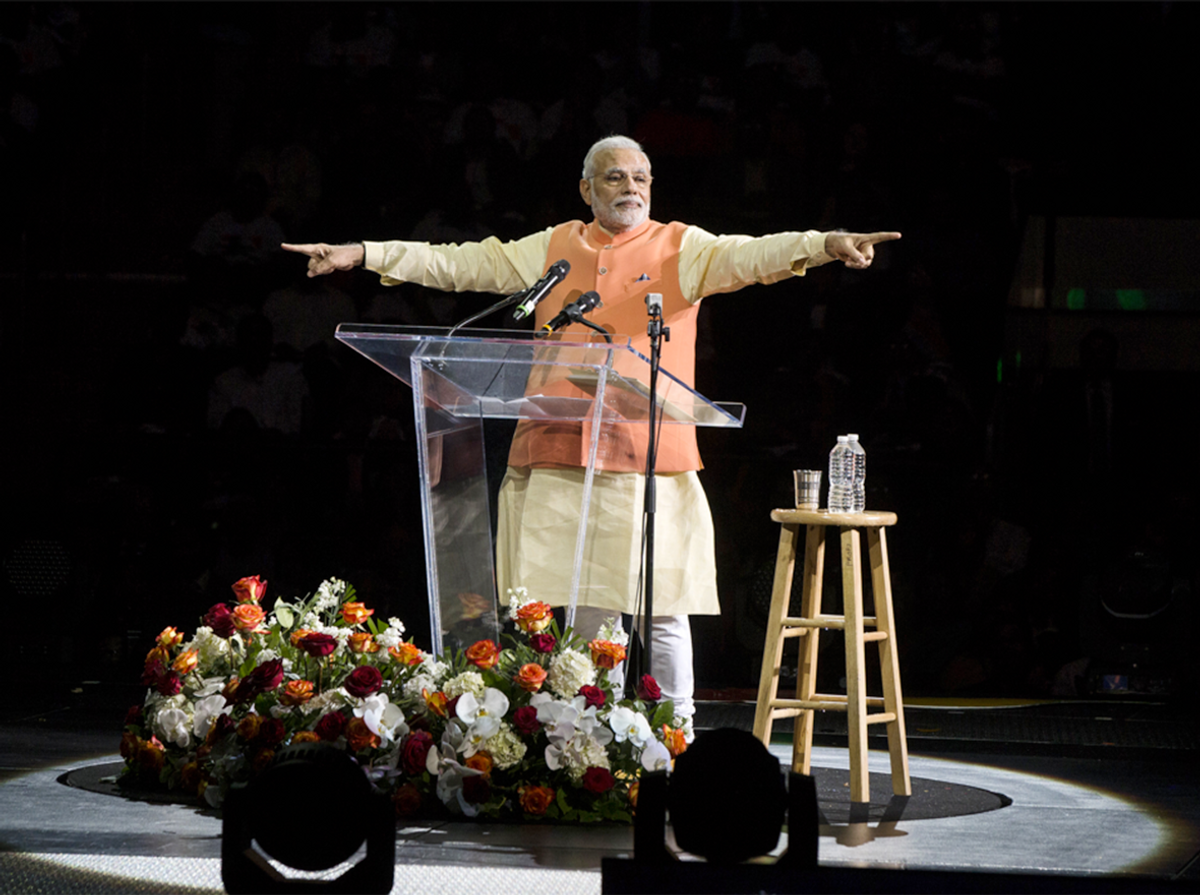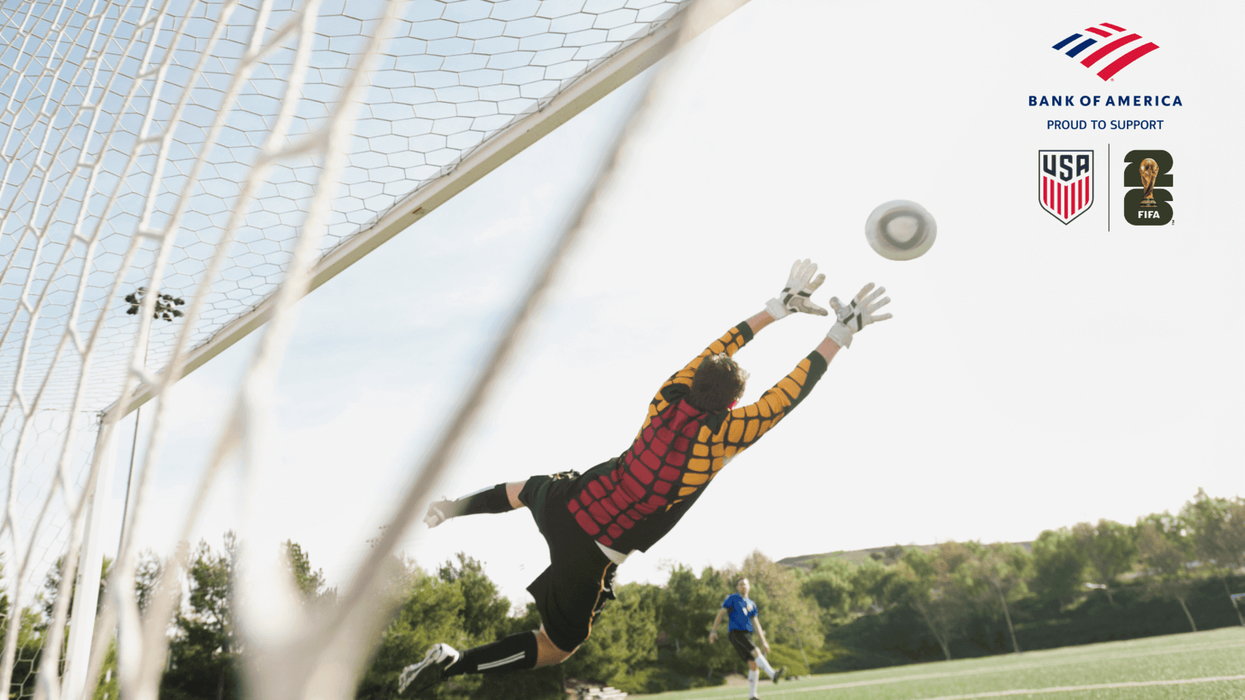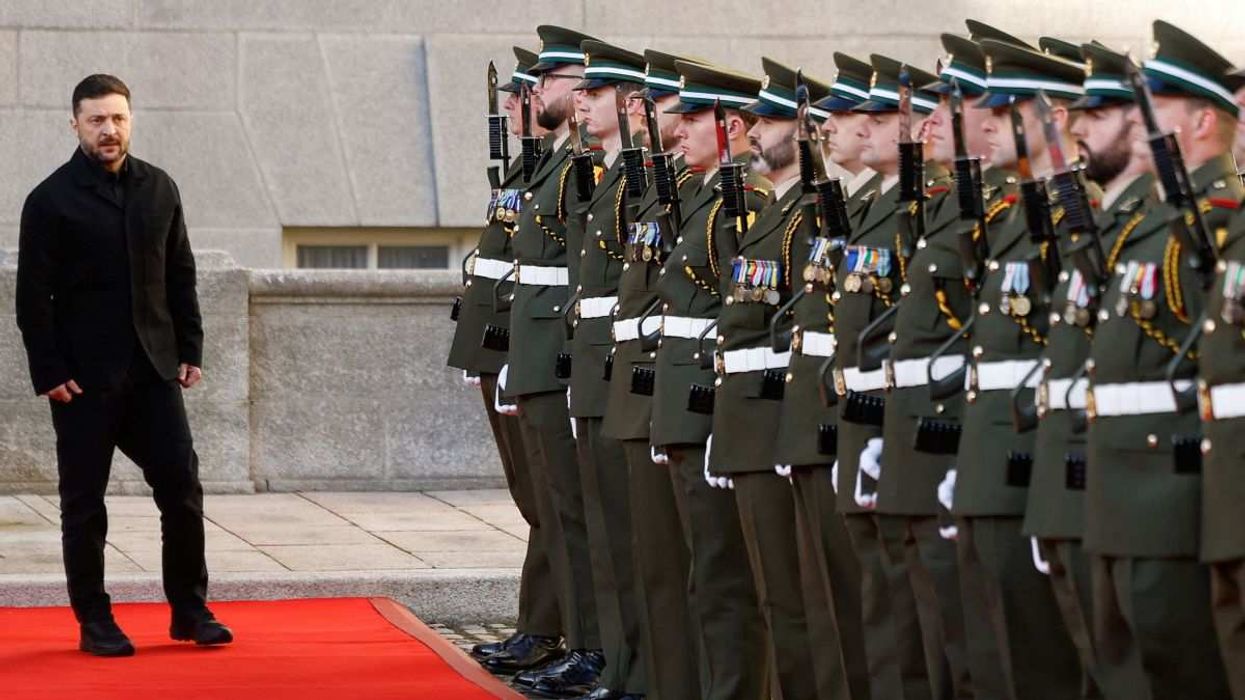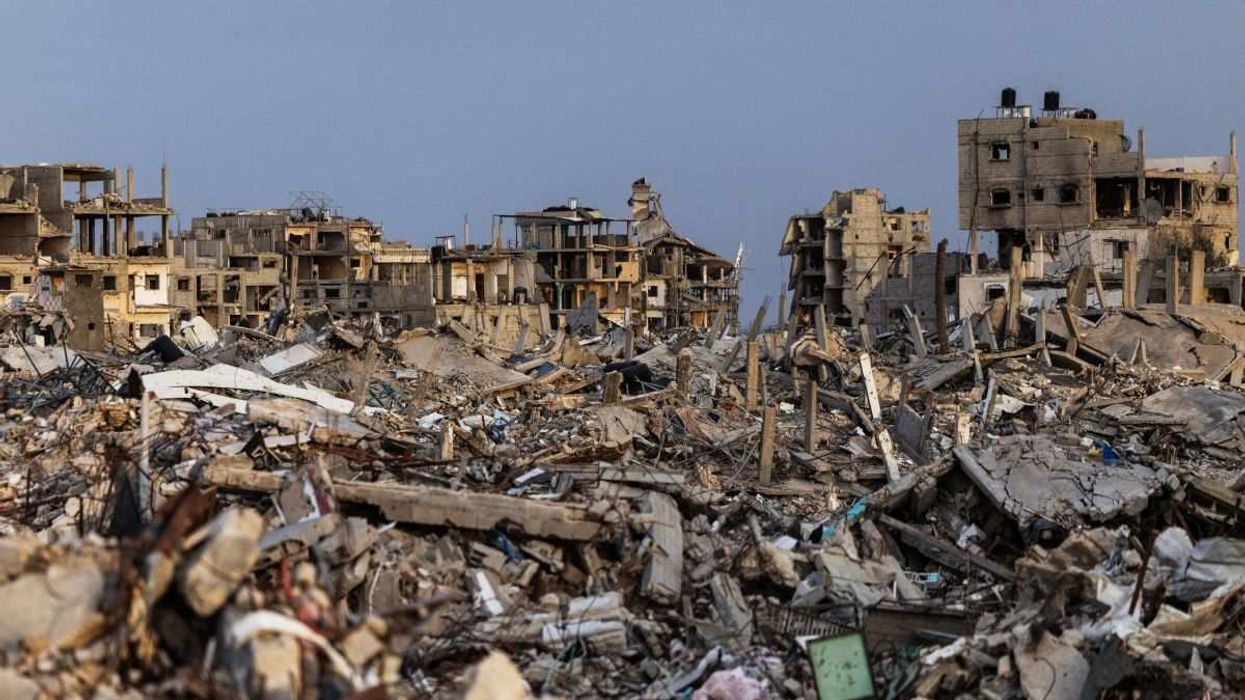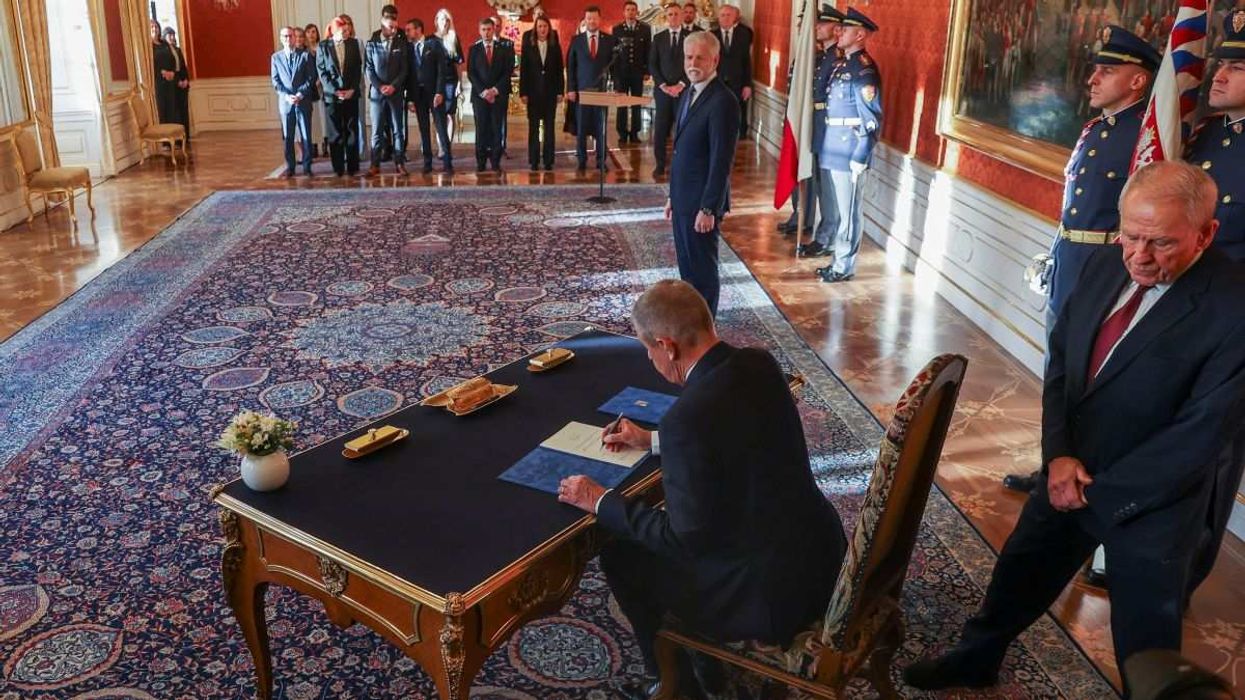Would the Narendra Modi of 2019 – the year his clampdown on Kashmir drew ire from human rights activists worldwide – have backed down on Prophet Mohammad-related gaffes made by members of his party? Pre-pandemic, would the bombastic Indian prime minister have missed a chance to forcefully weigh in on Sri Lankan domestic affairs amid a dire political crisis?
It wasn’t so long ago when former Sri Lankan President Mahinda Rajapaksa alleged in 2015, just days after voters removed him from office, that India’s spy agency, the Research & Analysis Wing, had helped oust him from power. Now, the tone of Rajapaksa’s family toward India couldn’t be more different. Namal, Rajapaksa’s son, recently thanked Modi and “the people of India” for sending aid to his country at a time when Sri Lanka is battling its worst economic crisis since independence in 1948.
The Sri Lankan crisis has helped reveal a departure from Modi’s traditionally muscular foreign policy approach. This comes after a series of unrealistic promises, hyperactive diplomacy, and religious divisions in India have backfired on New Delhi globally. Modi’s newfound caution has potential implications for the United States as it presses India to play more of a leadership role in the Indo-Pacific.
Rajapaksa, who returned in 2020 as prime minister of Sri Lanka, went into hiding last month after being targeted by protesters. His younger brother Gotabaya, meanwhile, is grimly holding on to the presidency despite demands for his resignation amid a crisis that has seen him order the stockpiling of goods to avoid food shortages. That’s just the sort of messy situation where Modi would’ve once forcefully intervened – in keeping with his aspirations of projecting India as a rising global power. Instead, Modi is treading with care in Sri Lanka at a time when economic and political fires are erupting across South Asia, including in Pakistan and Nepal. While India has committed more than $3 billion in aid to Sri Lanka, it has carefully avoided any suggestion that it has a favorite among the political leaders vying to lead the island nation.
“It’s a very interesting shift,” said Michael Kugelman, deputy director of the Asia Program at the Wilson Center. “India is clearly being cautious politically in Sri Lanka, even though it is sending significant economic aid.”
Kugelman said that it might be premature to conclude a broader move away from Modi’s assertive diplomacy based just on the change in strategy with Colombo. But there are other signs that suggest Modi is on the defensive internationally in a way that hasn’t happened before.
This week, Saudi Arabia, Iran, Qatar, and Kuwait lashed out publicly against the prime minister’s Bharatiya Janata Party after its representatives made controversial comments about Prophet Mohammad. Modi, who has built a reputation as a leader who doesn’t buckle in the face of criticism, caved, and the BJP suspended one leader and sacked another for their comments.
In many ways, that caution echoes India’s low-risk foreign policy approach of old. During the Cold War, India was non-aligned, though it did lean toward Moscow starting in the 1970s. By the 1990s, India had adopted a relatively more sedate stance even in its neighborhood.
Modi promised to change that with a “Neighborhood First'' policy. He became the first Indian leader to visit Nepal in 17 years. “At that time, we used to joke that Modi would win elections in Nepal too — that’s how popular he was because he said the right things,” said Santosh Sharma Poudel, co-founder of the Kathmandu-based Nepal Institute for Policy Research. Modi held one-on-one summits with Chinese President Xi Jinping to try to build a personal relationship. And addressing the U.S. Congress, he said New Delhi and Washington had finally overcome “the hesitations of history.”
But Modi has struggled to live up to many of his bombastic commitments, forcing New Delhi to confront the re-emergence of doubts about India’s role in its neighborhood and the world.
In April 2015, Modi claimed it was his tweet that told Nepal’s prime minister about the earthquake that had just devastated the Himalayan nation. Then, his government boasted about aiding Nepal. As a backlash started in that country, he asked Ranjit Rae, India’s ambassador to Kathmandu: “Why don’t they like us?”
Yet only a few months later, India tried to pressure Nepal to pause on adopting a controversial new constitution, setting the stage for a border blockade that strangled the smaller landlocked nation’s economy. Kathmandu blamed New Delhi and pulled closer to Beijing.
Now, as Nepal faces a foreign exchange crisis — it banned the import of cars, alcohol, and luxury items last month to maintain its remaining reserves — India has been more careful with its words and actions. “A big part of why India is disliked by many in Nepal is because it is seen as trying to interfere at the micro-level,” said Poudel.
That’s true in Sri Lanka too, where “India often gets blamed for everything,” said Asanga Abeyagoonasekara, a senior fellow at the Washington-based Millennium Project. Still, Rajapaksa’s claims in 2015 came at a particularly fraught moment in relations. Colombo had drifted too close to Beijing for New Delhi’s comfort. India was widely believed to have helped unite a fractured Sri Lankan opposition that then defeated Rajapaksa. But his return in 2020 forced New Delhi to reconcile with its former nemesis in Colombo.
Globally, India also has had to sheepishly walk back some of Modi’s boldest promises. Amid disruptions to global food supplies because of the war in Ukraine, Modi said India would boost its wheat exports. Instead, it has had to ban wheat exports because of a poor harvest. Last summer, India had to ban the export of COVID-19 vaccines after Modi promised to produce enough shots to meet the world’s needs — because his government failed to order enough doses. “There’s a lesson here on how it's probably wise to be more careful about what you promise,” Kugelman said.
Meanwhile, in Sri Lanka, India needs to walk a tightrope, said Abeyagoonasekara. Protesters appreciate the economic help from their northern neighbor, he said. But already, New Delhi is having to fend off criticism – this time that it’s helping the Rajapaksas. It has rejected claims that Mahinda Rajapaksa has escaped to India and rumors that the government in Colombo has bought water cannons directed against protesters using an Indian loan.
At a time when Western officials believe that China is establishing a military base in Cambodia, Modi’s reticence to insert India more proactively in Sri Lanka sits uneasily with his previous claims that New Delhi would serve as a “net security provider” in the Indo-Pacific.
But India can’t afford to sit on the fence too long. “This [the crisis in Sri Lanka] could become a national security challenge for India too,” Abeyagoonasekara warned.
Charu Kasturi is a freelance writer specializing in foreign affairs. He is based in Bangalore, India, and often writes for outlets such as Al Jazeera and Foreign Policy.
